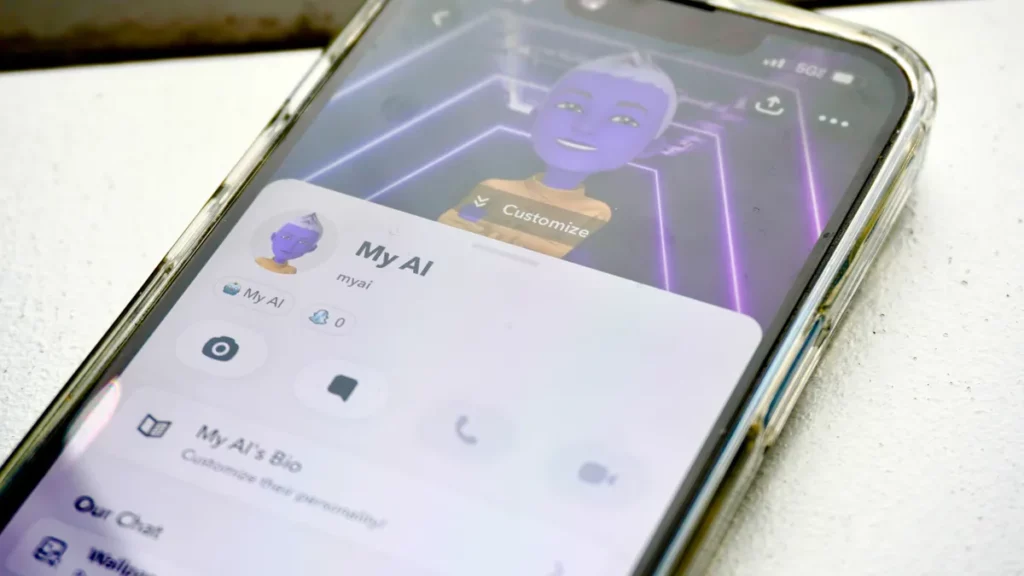Snapchat users will soon see a ghostly picture floating over AI-generated photographs, as the company joins other major internet companies in employing watermarking technology to combat AI misinformation and deepfakes.
Images created with Snapchat’s AI capabilities, such as the app’s extend tool and the recently released Dreams feature, will be branded with a transparent watermark (Snapchat’s ghost logo) when exported or downloaded from the app. Users who receive AI-generated photographs may also see the ghost logo and the app’s “sparkle” AI emblem.
Currently, Snapchat categorizes AI-generated material, including text interactions with its My AI chatbot, in several ways. Images made with Dreams are accompanied by a “context card” that describes the feature and the generative AI. My AI chats and the extension tool employ “contextual” images, such the sparkle sign, to.
READ MORE: YouTube Has Threatened To Suspend Content Producers Who Do Not Reveal Their AI-Generated Work

“We also take great care to vet all political ads through a rigorous human review process, including a thorough check for any misleading use of content, including AI to create deceptive images or content,” the company said in a statement. “The addition of these watermarks will help inform those viewing it that the image was made with AI on Snapchat.”
Along with the new transparency tool, Snapchat has committed to continuous AI literacy efforts. So far, just a generative AI FAQ is provided on its Support Site.
READ MORE: YouTube Will Promptly Indicate Whether A Video Incorporates AI-Generated Material
“While all of our AI tools, both text-based and visual, are designed to avoid producing incorrect, harmful, or misleading material, mistakes may still occur,” the business stated in a statement. “Snapchatters are able to report content, and we appreciate this feedback.”

Watermarking technology, according to AI watchdogs, isn’t a surefire answer, despite the fact that tech’s main players rely on it for user-side security.
In February, OpenAI stated that it would add metadata watermarks to photographs made by DALL-E 3. Google released SynthID, a tool that applies equally imperceptible watermarks to AI graphics, in August. Meanwhile, YouTube is imposing fines on users who fail to use its digitally altered content identification system.
Radiant TV, offering to elevate your entertainment game! Movies, TV series, exclusive interviews, music, and more—download now on various devices, including iPhones, Androids, smart TVs, Apple TV, Fire Stick, and more.

